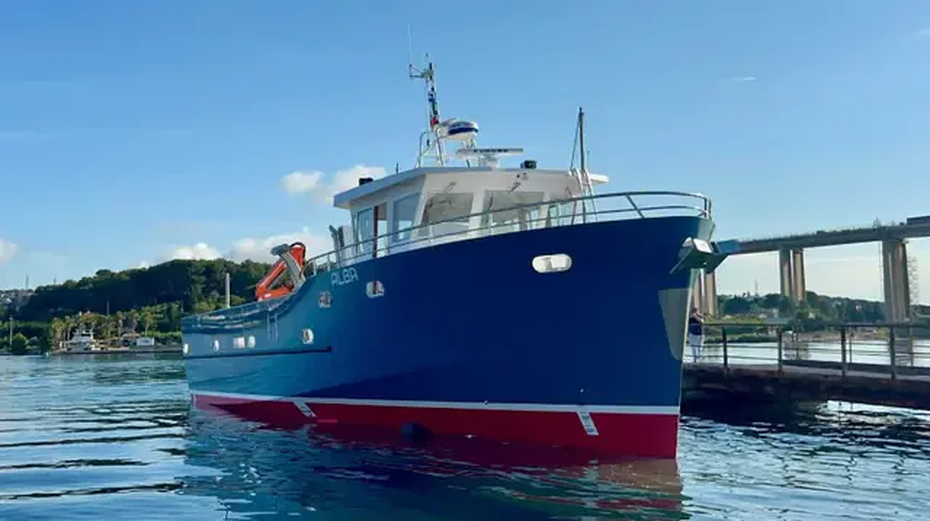
Alba was designed by French naval architecture firm Mauric and built by Chantier Naval Gatto to help LPMA Bastia train prospective fishing vessel crews in a range of areas to include navigation, research, and marine propulsion. It is the third training vessel to join the operator’s current active fleet.
The Bureau Veritas-classed vessel has a composite hull, an LOA of 19.95 metres (65.45 feet), a beam of 5.6 metres (18 feet), space for 12 students and two crewmembers, and removable winches and tackles for longline and seine fishing. The large deck area boasts a layout that was defined in close consultation with the LPMA Bastia teaching staff.
The configuration of the winches and tackles can be changed within just a few hours, enabling the vessel to easily switch between longlining and seining as required. The aft deck can also accommodate a tender or an additional fishing winch.
The vessel is also fitted with removable winches and tackles for longline or seine fishing, with configuration changes possible within just a few hours. Space is reserved aft for a boat or an additional fishing winch.
Mauric said the design of the vessel required the use of the alternative design methodology, incorporating multiple risk analyses (HAZID) to define the hydrogen system architecture, its integration into the vessel and, consequently, particularly for a vessel under 20 metres (66 feet), the general vessel architecture.
Mauric explained that designing a zero-emission vessel means first designing an energy-efficient vessel. To achieve this, the company’s high-quality hydrodynamic optimisations of the vessel's hull plan, performed through CFD calculations, enabled the development of an extremely efficient hull plan.
The hydrogen-electric propulsion arrangement will deliver a maximum operating speed of 13.5 knots while an economical cruising speed of 10 knots will enable the vessel to operate for 11 hours or sail up to 100 nautical miles. During trials, however, the boat was able to reach 15 knots. Mauric said that its work on optimising the composite structure significantly reduced the vessel's weight, resulting in a top speed one knot higher and 10 per cent greater fuel economy than what LPMA Bastia required.
The propulsion setup consists of two Danfoss 200kW electric motors connected to two 178kWh battery packs via shaft lines as well as two EODev Solutions range extenders each fitted with nine cylinders containing hydrogen compressed at 350 bar.
The hydrogen fuel to be used by the vessel is generated through renewable means. With the aid of an electrolyser, hydrogen is converted from the excess solar energy generated by the Corsica Sole solar farm near Bastia, and this hydrogen is then transferred to cylinders and transported by road to the Port of Bastia for eventual loading on the vessel.
Key features include an engine compartment spacious enough to enable students and instructors to stand upright, two hydraulic deck cranes, and a large wheelhouse that would enable instruction in both manoeuvering and navigation even as the vessel is underway. The wheelhouse electronics include two Furuno radars and a sonar.
Mauric said the design ensures all areas of the vessel are accessible to multiple persons simultaneously, enabling fluid teaching, as such attributes were uncommon in vessels of these dimensions.
Construction of Alba had a total cost of €4 million (US$4.2 million), which was funded entirely through the French government’s France Relance initiative, the aim of which was to revitalise the national economy in the wake of the negative impact of the Covid-19 pandemic.